In August last year, I drove up to Northumberland from Devon with my wife and three children for a big family get-together. We were celebrating my cousin’s 30th birthday and my uncle’s 70th – a joint 100th. Over 40 of us travelled from as far away as California and Australia for the occasion.
We stayed for three nights in a pub called The Twice Brewed Inn, only a few minutes’ walk from Hadrian’s Wall. Several stories circulate about the origin of the name Twice Brewed. One theory goes that during the Wars of the Roses, Yorkist foot soldiers stayed at the premises while fighting the Battle of Hexham in 1464. They complained that the beer wasn’t strong enough and demanded that it be brewed again (ignoring the fact that brewing beer takes several weeks and heating it again would likely kill off all the alcohol anyway). But it did the job and the ravaged soldiers, despite their hangovers – or maybe because of their hangovers – scared off an early morning raid by Lancastrian soldiers who fled in fear. Another theory claims that local farmers tended to brew their own beer too weak, so this establishment built its reputation on beer being doubly strong, or twice brewed. A third (more boring) theory suggests it is because Hadrian’s Wall passes nearby over the brows of two hills. The word ‘brow’ said with an east-Lancastrian accent supposedly sounds like ‘brew’. But then surely it would be Two Brews, not Twice Brewed? I’m definitely siding with the stronger beer theory.
Lady Trevelyan set up a youth hostel adjacent to the pub in 1934. She was teetotal and disapproved of the rowdy premises next door. She declared, ‘We shall serve nothing stronger than tea, and I hope that even that will only be once brewed.’ It therefore became known as the Once Brewed Youth Hostel (now a large stylish visitor centre and hostel). If you drive along the B6138 from the west (as we did) the road sign says Twice Brewed. If you come from the east, it says Once Brewed. Together they form the only buildings in the tiny hamlet of Once Brewed/Twice Brewed.
Once Brewed/Twice Brewed is in the middle of nowhere, about 200 metres from Hadrian’s Wall, and less than half a mile from the legendary Sycamore Gap.
Only, I am ashamed to say, I had never even heard of Sycamore Gap until our weekend in Northumberland.
My aunt and uncle had arrived at the pub earlier that day and just got back from a walk along the wall.
‘You should go up to Sycamore Gap before dinner,’ said my aunt.
‘What is Sycamore Gap?’ I asked.
‘You’ve never heard of Sycamore Gap? The Robin Hood tree?’
‘What’s the Robin Hood tree?’
‘You know, the famous tree from Robin Hood: Prince of Thieves,’ said my uncle. ‘You must know it!’
‘I don’t think I remember a tree in Robin Hood. I was about 12 when that film was released.’
‘Sycamore Gap is really famous,’ said my aunt. ‘I’m sure you’ll recognise it when you see it.’
We left our bags in the room and headed out for a wander up to the wall. It had been a nine-hour drive from Devon, and I was keen to stretch my legs. Our three children, Layla (15), Leo (12) and Kitty (10), were less keen on the idea.
This was my first ever visit to Hadrian’s Wall. Although I had never heard of Sycamore Gap, I felt proud that I had heard of Hadrian’s Wall. Embarrassingly though, I knew very little about it. I knew it was an old wall (possibly built by an eccentric builder called Hadrian?) and I thought it perhaps formed the old border between England and Scotland. This, it turns out, is a common misconception that I discovered after I did some quick googling to hide my ignorance in case Layla, Leo or Kitty asked me about it. The wall was not built by Hadrian, but for Hadrian – the Roman emperor – in the year 122. It formed the border between Roman Britannia and the unconquered land to the north known at the time as Caledonia. Hadrian’s Wall stretched for 73 miles across the country from Bowness-on-Solway on the west coast to the imaginatively named Wallsend on the east coast.
Most of the wall was demolished to build houses and roads, but sections of it remain and footings have been excavated along its course. The section either side of Sycamore Gap is one of the best preserved on the route.
‘Why are we going for a walk to see a tree?’ asked Leo, as we headed up the hillside towards the wall.
‘It’s a really special tree.’
‘What’s so special about it?’
‘I’m not really sure. It was in a Robin Hood film. And it looks really pretty. And there’s an amazing wall too.’
‘I can’t wait,’ he said, sarcastically.
‘Me neither,’ said Kitty. 'I’m really glad we’ve come all this way to see a wall and a tree.’
Hadrian’s Wall was magnificent. It snakes its way up and over the brows (or ‘brews’ if you are east-Lancastrian), with remains of ancient Roman structures dotted along its course. It once would have stood 15 feet tall and 10 feet wide and it’s staggering to think of the manpower involved in building something like this, almost 2,000 years ago.
One minute we were trudging up the hill in bright sunshine, the next the sky darkened, and it began to rain heavily. We hurried down some stone steps into a dip in the ridge and took refuge under a lone tree.
We had been sheltering there for a few minutes when it suddenly dawned on us.
‘Hang on, isn’t this THE tree?’ said Rachel.
‘Oh yeah, I think it is,’ I said.
‘It looks just like a normal tree,’ said Leo. ‘I’ve seen loads of way better trees than this.’
When standing underneath the tree at Sycamore Gap, you couldn’t fully appreciate the significance of it. The rain stopped as quickly as it arrived, and we walked down the grass slope away from the tree. It is not until you distance yourself from the tree and the wall that you appreciate its beauty.
It looked instantly familiar the second I saw it. It turns out my subconscious knew of Sycamore Gap, even if I didn’t.
Sycamore Gap has been a photographer’s favourite for decades. Sitting in a natural dip in the ridge, it was no wonder everybody but me knew of it.
It instantly leapfrogged several others to secure its place on my imaginary podium and get its hands (or branches) on the coveted prize of ‘My Second Favourite Tree of All Time’. Which is my favourite? Well, you’ll have to wait for a future post to find that out.
Even the children seemed quietly impressed with it. Although they certainly wouldn’t admit to it.
We returned to the pub and the rest of our extended family arrived in dribs and drabs over the next few hours. I enthusiastically told each of them about Sycamore Gap as though I had been a big fan of it for years.
‘What is Sycamore Gap?’ asked one of my cousins.
‘Surely you must know Sycamore Gap?’ I said. ‘It’s really famous. Everyone knows it. It’s the tree from Robin Hood. I can’t believe you’ve never heard of it.’
Sycamore Gap cast such a spell over me that I needed to get back out there at every opportunity to go and see it. Each morning, my cousins, Rachel and I went for a pre-breakfast run up to Hadrian’s Wall and then did a loop past the tree. On two occasions we continued on to the far end of Crag Lough and then back down the other side. From here you got to see Sycamore Gap from the other, much less photographed side. The famous view of the tree is from the slope below it to the south. And despite sitting in a dip, it looks big and powerful, with no land beyond it, only sky.
We were now on a ridge high above, looking down on it from the north. From here, dwarfed by the sheer cliffs that border Crag Lough, in an otherwise treeless landscape, it looked like a toy – small and vulnerable.
When I zoomed in closely with my phone, I could see a group of walkers climbing the steep steps up from Sycamore Gap. It was 7.30 a.m. and these were the only other people we had seen. It was more of my aunts, uncles and cousins. They couldn’t stay away from the tree either.
I became properly obsessed with that tree. I couldn’t take my eyes off it. On one of the days, we all walked from the pub to nearby Vindolanda and spent several hours exploring the incredible Roman ruins and museum. But the highlight for me was the return walk back to the pub through the fields and catching a glimpse of Sycamore Gap in the distance.
Each night at the Twice Brewed Inn, we drank heavily – to honour those foot soldiers during the Wars of the Roses – and ticked off most of the beers on the extensive beer menu, all brewed in the pub’s own microbrewery. Our favourite, and the one we ordered more than any other? Sycamore Gap Pale Ale.
I was so enamoured by my time at Hadrian’s Wall, and in particular Sycamore Gap, that one of my photos ended up becoming the cover of my book, The Self-Help Bible (my personal favourite of all my books). I thought the tree symbolised hope and growth. It’s a photo I took with my phone during one of our many walks that weekend. The figure beneath the tree is my brother-in-law. I liked that he appears to be gazing up at the tree, looking for answers.
The news on the morning of 28th September 2023 that the tree at Sycamore Gap had been deliberately felled made me feel physically sick.
At some point during the night, as Storm Agnes battered the country with heavy winds and torrential rain, somebody decided to pick up a chainsaw and head out to cut down that wonderful tree.
It was estimated to be about 300 years old, and it was inevitable that it was going to fall someday. If it had toppled due to age, weather or disease, it would still have been very sad. But the fact it was cut down in an act of mindless vandalism gave the news a far darker tone. And it wasn’t just a spontaneous, impulsive act. The tree was out in the middle of nowhere, a good 20-minute walk from the nearest place to park a car. It had involved planning, commitment and time to think.
The tree at Sycamore Gap survived hundreds of years of extreme winds, all out on its own with no protection. It survived conflict. It survived excavations and maintenance to the wall below it. It survived an increasing number of tourists each year. It survived people sheltering from the rain under its boughs. It survived Morgan Freeman and Kevin Costner walking beneath it, and Wulf – the young boy in the film – climbing the tree after being chased by the Sheriff of Nottingham’s hounds (I’ve re-watched the scene in the film since). It survived on a rocky hillside, unaware that it stood on the border of land fought over for centuries.
It survived it all.
But it didn’t stand a chance against someone with a chainsaw in the middle of the night.
The tree at Sycamore Gap had been voted England’s Tree of the Year in 2016. Ironically, England’s Tree of the Year in 2015 – the Cubbington Pear Tree – was also deliberately felled by chainsaw. This one was cleared in October 2020 to make way for the doomed High Speed 2 (HS2) railway.
I had a brief spell of anger towards the perpetrator. Who were they? What was their motive? How could they do something like this? But this soon disappeared as I realised it was irrelevant what had possessed somebody to carry out the act. It was too late to change anything. And whoever was responsible must have had some serious issues going on in their own life to be in the state of mind to pick up a chainsaw in the middle of the night and head out to cut down such a symbolic tree during a storm.
It was front-page news in the UK for several days. The outpouring of grief was immense.
But I don’t think people were grieving for the tree. Trees are cut down all the time. They were grieving for the fact that they, and others, will never be able to experience the feeling of awe and wonder at looking at that view again. They were grieving that whenever people will look at that dramatic dip in the landscape from now on, it will always look incomplete.
That is why this gap needs to be filled.
Not by a young sycamore sapling that may or may not like its new home, and even if it does, will take decades to grow to any significant size in the substantial chasm left by its predecessor.
It needs to be filled by something bigger.
The severed trunk of the tree should be left where it is. New shoots may sprout, which will be a beautiful symbol of hope and resilience. But these too will take decades to grow, and a coppiced tree is never going to be as tall as it once was.
Personally, I like the idea of a tree-sized memorial, perhaps made of stone or metal. A replica of the famous tree, sitting next to the old stump. Benches and picnic tables should be made from the fallen timber, allowing people somewhere to sit and enjoy this magical part of the world. Something good needs to come of this. It will never be as special as the original tree, but a permanent – chainsaw-proof – monument would come very close.
Some people argue that creating an artificial monument is unnatural and would be a scar on the landscape. Those people also forget the fact that Hadrian’s Wall is one of the most substantial man-made structures on earth. And nobody calls that a scar on the landscape. It is this combination of natural and man-made beauty that gives the area its charm.
I feel so honoured that we got to visit the Sycamore Gap tree before it fell. But I hope to return one day and gaze in awe once more at whatever takes its place.





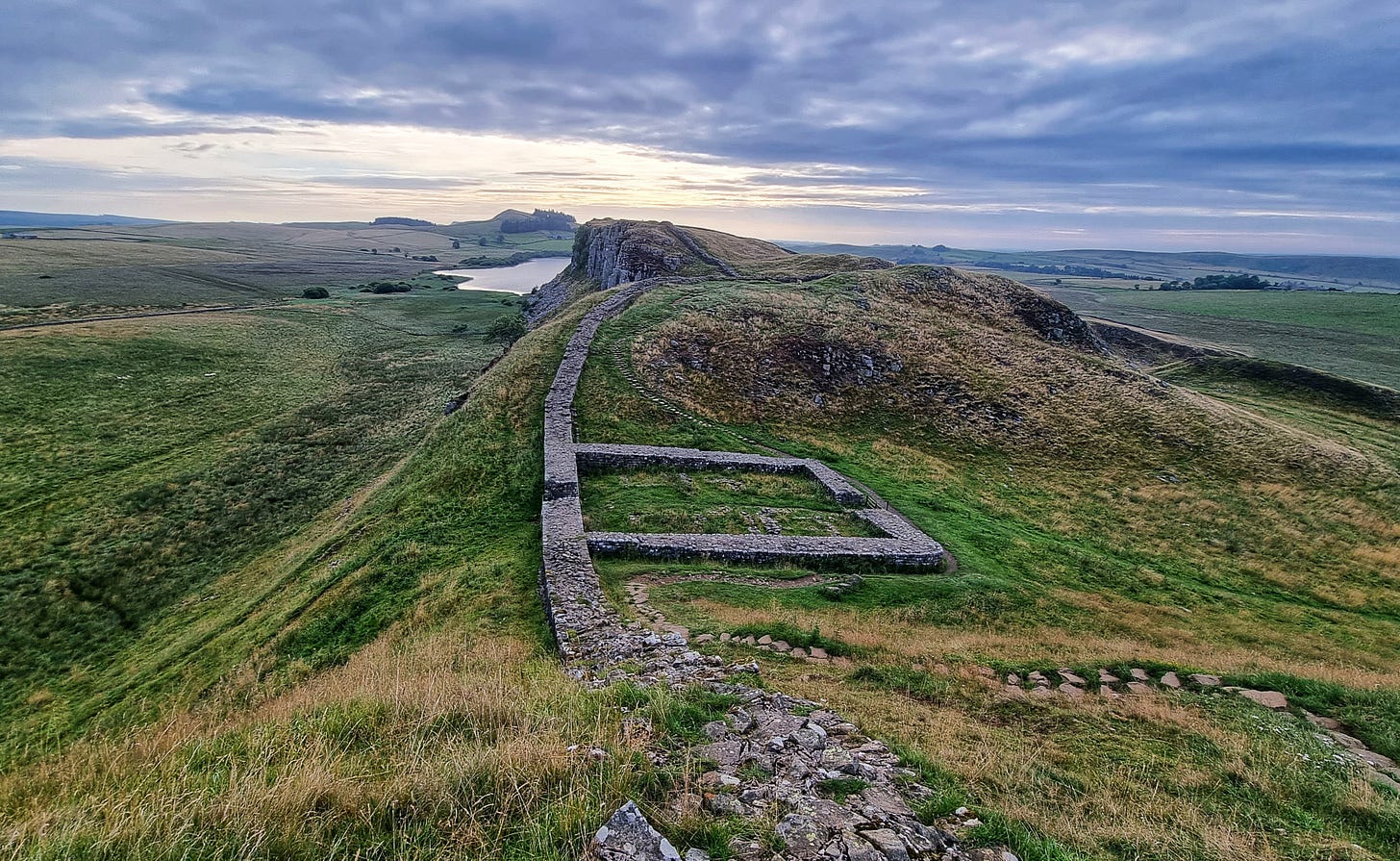
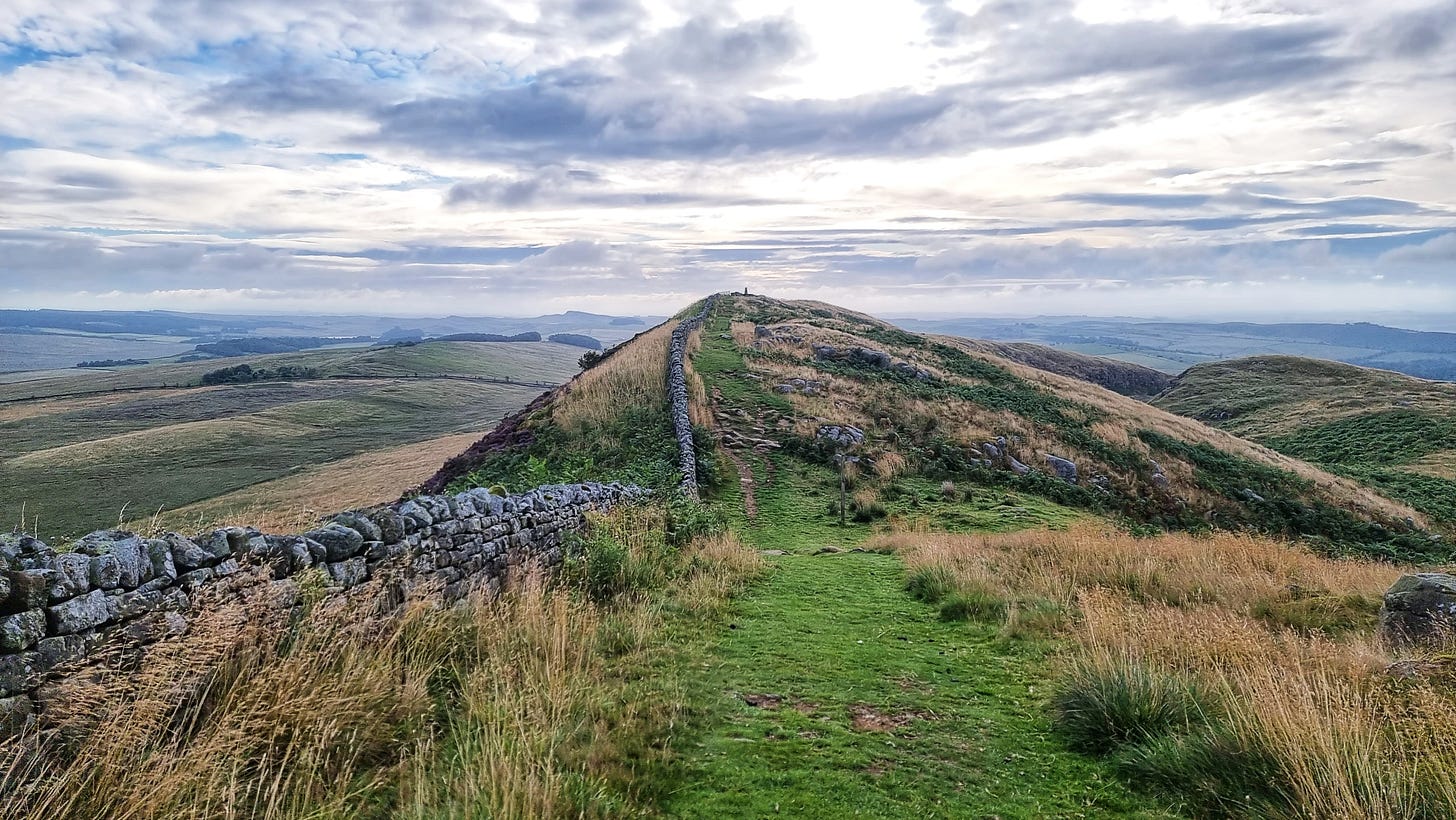
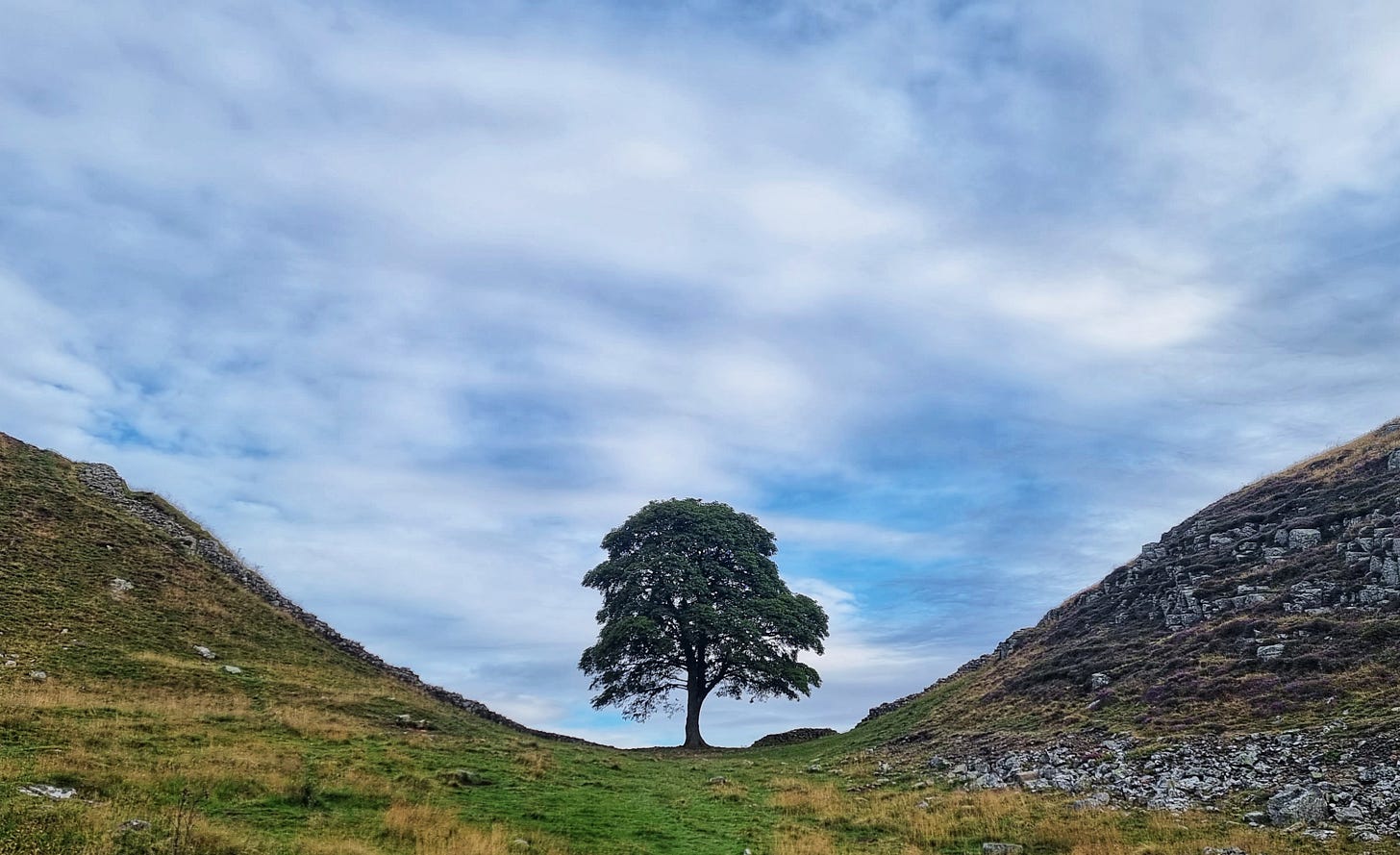
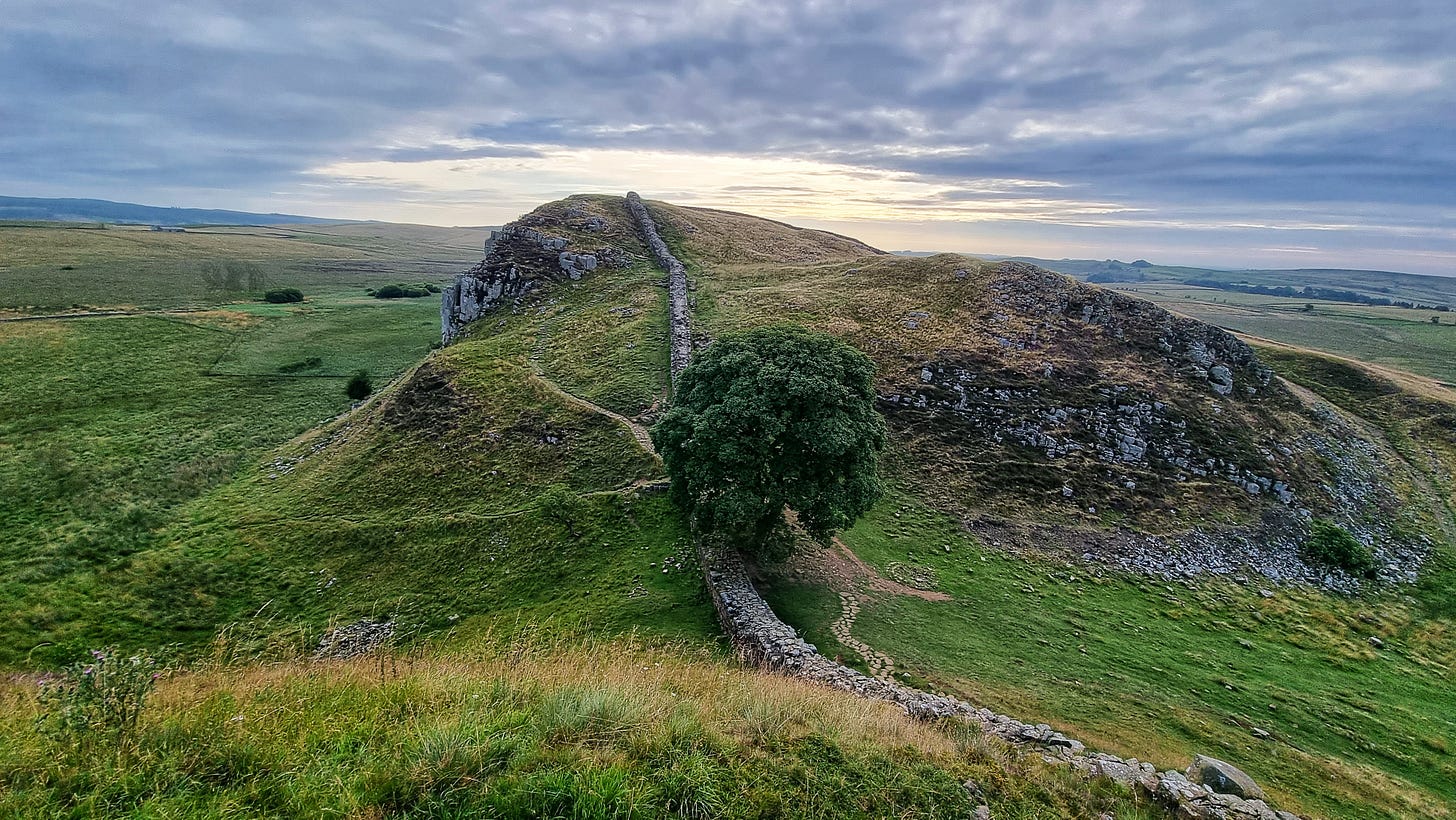
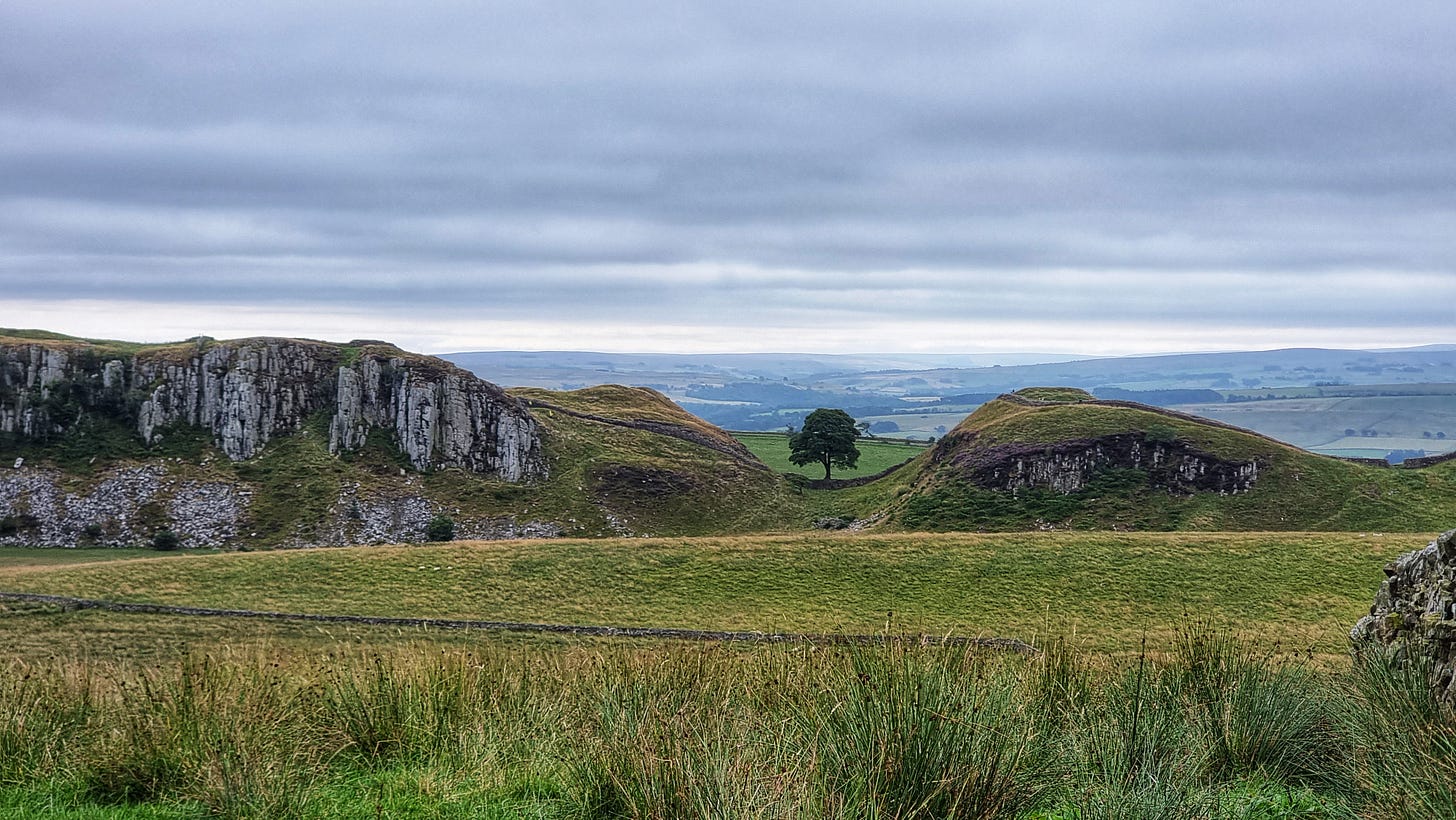
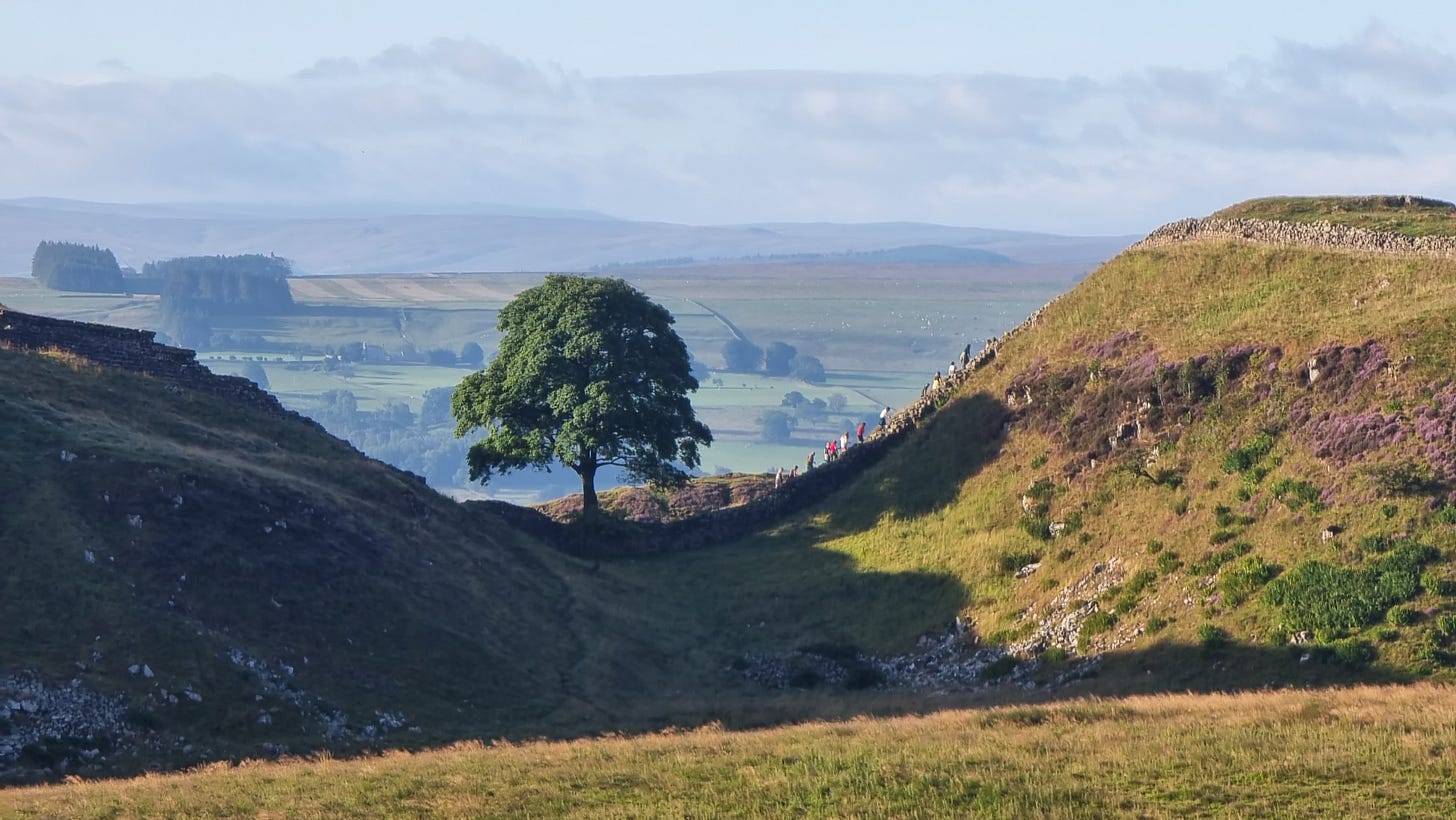
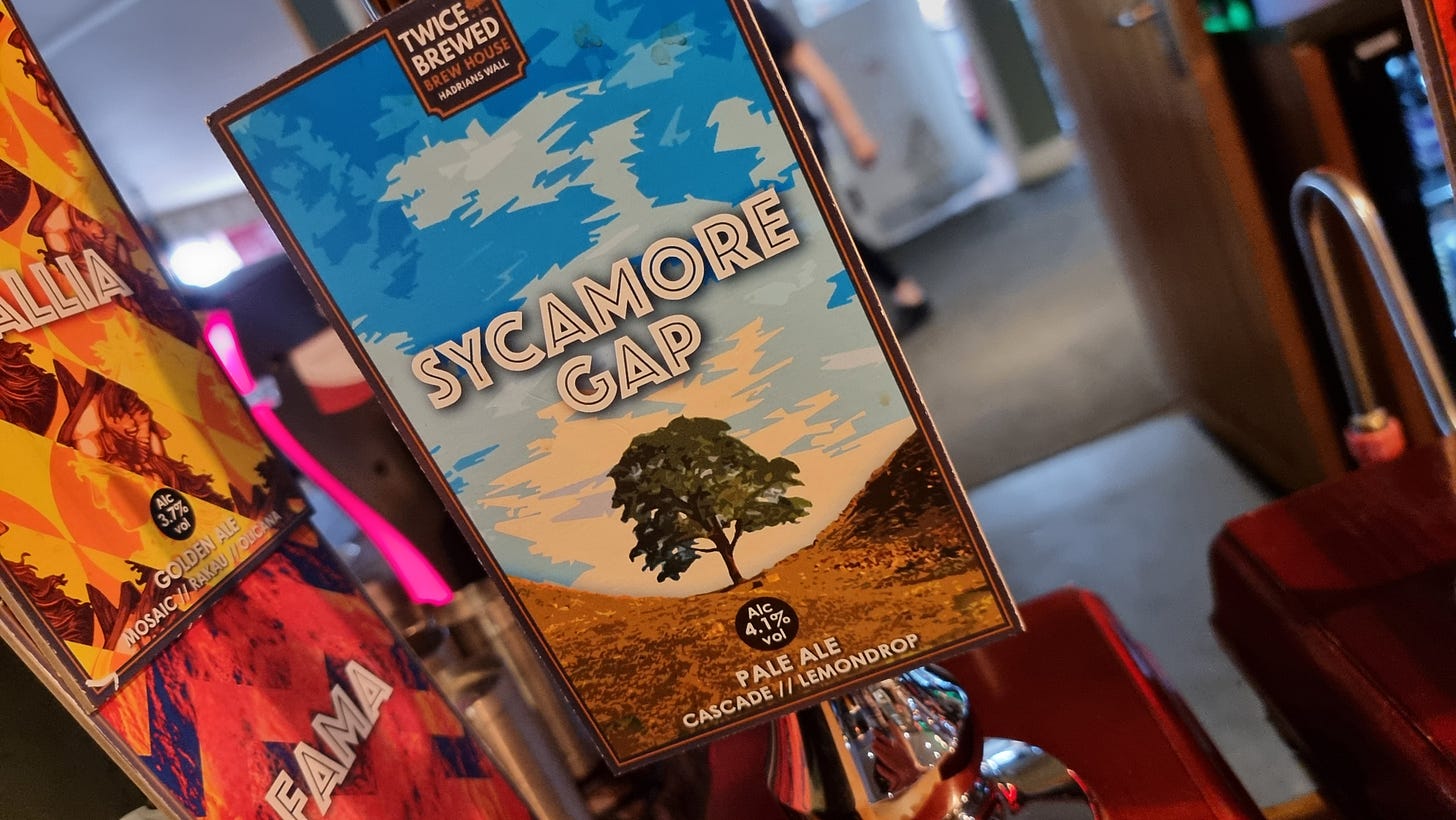

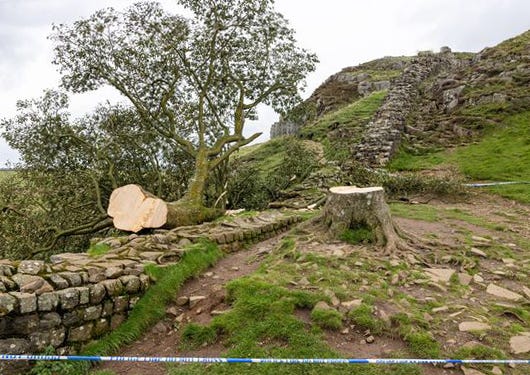
A wonderful story of your visit to that iconic tree. And I love your idea of a permanent memorial to it there, stone would be appropriate I feel, with Hadrian’s Wall there too.
A beautiful story. I loved the fact that all your family spent such an amazing time just marvelling at that tree. Quite emotional...